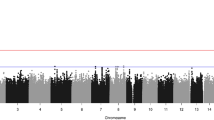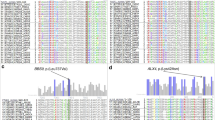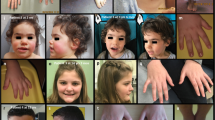Abstract
The Snail family of proteins in vertebrates comprises two zinc-finger transcription factors, Snail and Slug, which are thought to be involved in the formation of the mesoderm and neural crest. Here, we describe the isolation and characterisation of the human Snail (SNAI1) gene and a related Snail-like pseudogene, SNAI1P. SNAI1 spans approximately 6.4 kb, contains three exons and has a CpG island upstream of the coding sequence. A single transcript of 1.9 kb was detected in several human foetal tissues, with the highest expression in the kidney. The SNAI1 open reading frame encodes a protein of 264 amino acids containing four zinc-finger motifs that show 87.1% identity to mouse Snail (mSna). SNAI1 was mapped to chromosome band 20q13.1 and is likely to lie between markers D20S109 and D20S196. Investigation of SNAI1 coding sequences by single-strand conformation polymorphism analysis excluded SNAI1 as a major disease gene in craniosynostosis. Two single nucleotide polymorphisms encoding synonymous amino acids were identified in exon 2. The SNAI1P pseudogene was isolated, sequenced and mapped to chromosome band 2q34.
Similar content being viewed by others
Author information
Authors and Affiliations
Additional information
Electronic Publication
Rights and permissions
About this article
Cite this article
Twigg, S., Wilkie, A. Characterisation of the human snail (SNAI1) gene and exclusion as a major disease gene in craniosynostosis. Hum Genet 105, 320–326 (1999). https://doi.org/10.1007/s004399900143
Received:
Accepted:
Published:
Issue Date:
DOI: https://doi.org/10.1007/s004399900143




